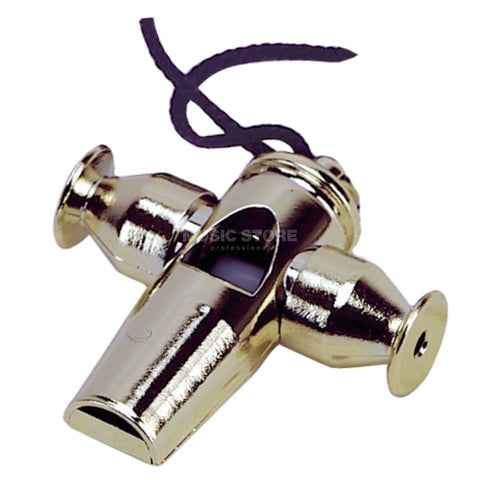Light Samba Instruments Descriptions
Posted on 07 February 2019
Questions regarding Samba instruments have been a constant since we started to write about the Brazilian Carnaval. I guess there is a fascination upon the subject, which can be easily understood. When we think of a regular orchestra or band, we might know by the top of our heads a few of the instruments like saxophones, clarinets, piano, etc. We have been listening to them, learning about them, seeing people play since very early stages of our lives. Samba instruments, by the other hand, are very specific and some of them only “exist” formally since the 1950´s.

Above the Samba Shaker, also called Chocalho or Soalheira
Another possible reason for this curiosity is probably due to the fact that many instruments simply were not industrialized or used on a large scale outside of Brazil. They are truly very recent samba phenomena, we could say. For this reason, we are writing two specific sections on the entire samba instruments used at the Brazilian Carnaval; one relative to what we call the “Light Samba Instruments” and the other commonly called “Heavy Samba Instruments”. As you may have read under the Drums Section – Bateria blog, most of them have African roots and slowly were adapted to samba-school use. On this page you will review the ‘light group’ Samba instruments descriptions. Let´s take a close look at their descriptions, photos and use.
Originally from East Africa, the pandeiro (tambourine) is considered a complete percussion instrument because it has low, medium, and high timbres. Made of wood, goatskin, and five sets of jingles ("Pratinelas", that are loosely arranged in pairs around the sides of the instrument), the conventional pandeiro from Rio de Janerio was introduced into samba and chorinho as a rhythmic base. The pandeiro could be associated to the Brazilian equivalent of the classical tambourine and some consider it as it´s national instrument/icon.
The basic rhythm of the pandeiro is a stream of semi-quavers, each with a distinct timbre produced by the unique playing technique used for the instrument.
Below a fantastic photo from Agencia FOTO BR team!

Some of the late and present Pandeiristas that helped introduce the pandeiro in many musical include: João da Baiana, Jackson do Pandeiro, Dona Selma do Côco, Carlinhos Pandeiro de Ouro, Bira president, Paulinho Da Costa, Airto Moreira, Marcos Suzano.
Going back to the Pandeiro use at the samba-schools in Rio and São Paulo Carnaval, we could say they have been abolished as part of the regular bateria. Today they are used as a prop by some percussionists who play it—with great inspiration— most of the times close to the Queen of Drums, Samba-School God-Mother and other samba dancers. The name give to the pandeiro player is Pandeirista.
Tamborim (plural, tamborins)
Tamborim is the smallest (single- headed hand 4" ) of all drums within a Samba-School drum blog. The small frame-drum is played with a single stick or multi-pronged plastic beater (or in more intimate pagode samba settings, with the fingers). The tamborim used to be played only at Rio´s Samba-school, but today they are commonly seen in rodas de samba, pagoda, chorinho and bossa nova. The forefinger is used to muffle the sound from behind the membrane during rhythmic syncopations. The most commonly used stick is multi-pronged and very flexible. The drum is also turned and hit on an upstroke. In samba schools the tamborins are often placed at the front of the ensemble, and the musicians perform choreographic routines with the instrument as they play.

To many experts, samba-tamborins give the punch and the shape to the samba. While the surdos and the caixas provide the continuing rhythm, the tamborins add an exciting texture to the samba. The tamborim section usually has its own director.

Cuíca
The cuíca (pronounced "queekaa") is a single-headed Brazilian friction drum, in which sound is produced by rubbing a short, thin, carved bamboo cane attached to the membrane on the inside of the instrument. It produces an unearthly sound and exceptional pitch range; hence its popularity as a solo instrument. The pitch is altered by pressing the thumb against the skin near the node where the cane (bamboo skin) is tied. The thin bamboo stick is attached to the centre of, and perpendicular to, the drum head, stretching into the drum's interior. The instrument is held under one arm at chest height with the help of a shoulder strap. Its rhythm depends on the beat of the surdos, which it follows.
The body of the cuíca is normally made of metal. It was probably introduced to Brazil by Bantu slaves, though there are also types of friction drums in various parts of Europe.
The cuíca plays an important rhythmic role in samba music of all kinds. It is particularly notable as a fixture of Rio de Janeiro's Carnival groups, which feature entire sections of cuíca players. The Cuíca is also considered a “sensual” samba instrument, both because of its “crying” noise, and also because of its shape.
Agogô [Double cowbell]
An Agogô (meaning gong or bell in Yoruba) is a single or multiple bell now used throughout the world but with origins in traditional Yoruba music and also in the samba baterias (percussion ensembles). The Agogô may be the oldest samba instrument and was based on West African Yoruba single or double bells.
The Agogô has the highest pitch of any of the bateria instruments. Império Serrano samba-school is famous for its Agogô section, being one of its trademarks. They have up to 50 Agogô-samba percussionists.
Reco-reco [Scraper]
The Reco-reco is a scraper which produces sound by drawing a metal rod across the corrugated grooves of one or more metal springs. Alterations of timbre can be achieved by placing the thumb of the weak hand across the springs for particular notes. In some regions of Brazil the Reco-reco is known as 'reso-reso', 'raspador' or 'casaca', and it is used in a variety of African-Brazilian traditions in both rural and urban contexts. Some samba-schools don’t use the reco-reco anymore, but some still do. In pagodes and chorinho they are used sometimes.

Chocalho
The chocalho is a type of two-handed shaker that is an aluminum frame of pratinelas set out like an abacus. The chocalho section, within the bateria, will often use some choreography in the same way as the tamborim section. Do not be fooled into thinking that this is an easy instrument to play, stamina and efficiency of movement are required here as it is played at or above head height. It contributes heavily to the "swing" of the bateria. There are chocalhos with two, three, four five and even six rows of jingles.
There is not much of a difference in the sound of chocalhos based on the number of rows, but the larger number of rows, the stronger and more powerful the sound will become. This instrument appears more in the refrains of the samba, and there can be entire passages without being heard. The chocalhos helps the caixa provide swing to the samba, but they can be lighter.

Rocar
The rocar is another type of shaker. It uses the same pratinelas as the chocalho but they are arranged at each end of a 1" square bar of wood. It can be played with one or two hands and is a little lighter than the ganzá. Care must be taken with this instrument if played at head height as the ends of the pratinela baring rods are exposed.
Ganza
The ganzá is another type of shaker. It is an aluminum cylinder filled with beads or gravel. They come as singles, double and sometimes triple. The chocalho is favored in the bateria because it is louder than the ganzá.

Shekere
The shekere is another type of shaker. It is the Nigerian Yoruba name for a gourd instrument with a net of beads strung around it. It is played by shaking the beads and striking the gourd. Some skilled players are able to juggle this instrument while keeping time. It's more widely used in Northern Brazil.

photo credit: How To website
Frigideira
The frigideira is basically a frying pan adapted to play in some samba drum sections. This funny, but somewhat used samba instrument is played like a tamborim in some samba-schools and its interesting metallic ring can be heard very clearly above the other instruments in the bateria.
photo credit: Wood Brass Instruments
Apito – Whistle
The apito is a short high-pitched whistle with one, two or no finger holes. Some apitos have a captive pellet to add a roll to the sound, similar to a football referee's whistle. The apito plays a key role in the batucada, as it is blown by the Mestre de Bateria, the Drum Section Master, and used to direct the percussionists. It is very difficult to hold this particular metal apito between your teeth if you are playing a drum. A small referee's whistle is used normally to cut through the volume of the bateria. There are also plastic versions of the tri-tone apito.

photo credit: Musicstore.de
We would like to thank the Editor of Samba Party website, where we used as reference to some of the opinions, as well as wording of some of the instruments descriptions.








